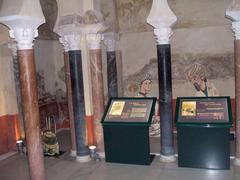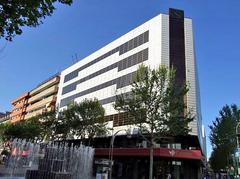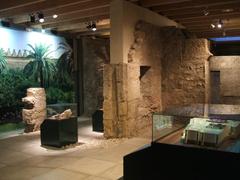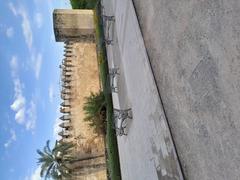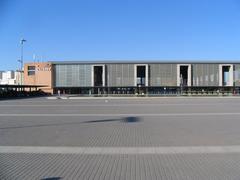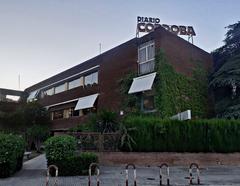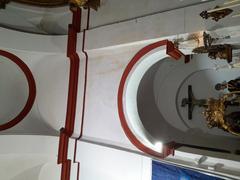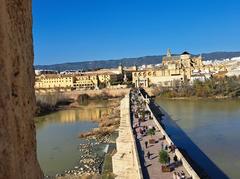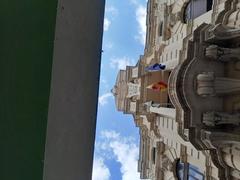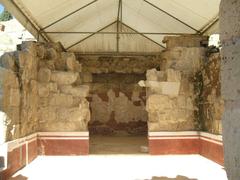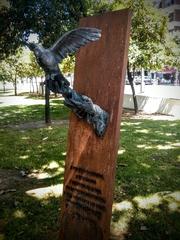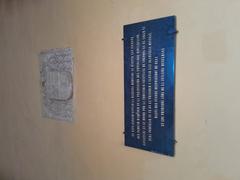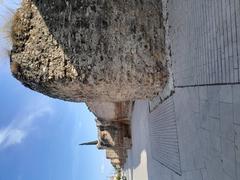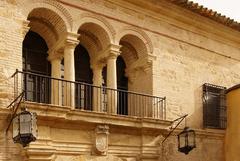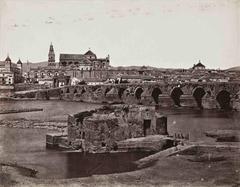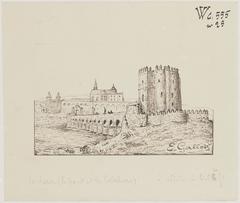Enmedio Watermill Visiting Hours, Tickets, and Historical Sites in Córdoba, Spain
Date: 14/06/2025
Introduction
The Enmedio Watermill (Molino de Enmedio), perched along the banks of the Guadalquivir River in Córdoba, Spain, stands as a testament to the city’s enduring legacy of hydraulic engineering and multicultural heritage. As one of eleven historic watermills that once powered Córdoba’s economy and daily life, Enmedio offers visitors a unique lens into the interplay of Roman, Islamic, and Christian influences that shaped the city’s evolution. This comprehensive guide presents the history, architectural features, visiting details, and travel tips to help you make the most of your visit to this remarkable site (Wikipedia: Mills of the Guadalquivir; UNESCO Urban Heritage Atlas: Córdoba).
Historical Background
Origins and Development
The watermills of Córdoba trace their origins to Roman times, but most—including Enmedio—were developed during the Islamic period (8th–15th centuries), when the city flourished as a center of innovation and commerce. These mills harnessed the Guadalquivir’s current to grind grain, supporting Córdoba’s population and export economy. Islamic rulers expanded and perfected the city’s hydraulic infrastructure, including dams, weirs, and norias (waterwheels), integrating advanced water management systems that persisted through successive eras (UNESCO Urban Heritage Atlas: Córdoba).
With the Christian conquest in 1236, ownership and use of the mills shifted, adapting over time for new economic roles, including cloth fulling and later small-scale hydroelectric power in the 19th and 20th centuries (Wikipedia: Mills of the Guadalquivir).
Architectural and Technological Features
Structural Design
Strategically positioned between the Roman Bridge (Puente Romano) and the Mezquita-Catedral, the Enmedio Watermill features robust stone masonry, arched windows, and a gabled terracotta tile roof that reflects Córdoba’s vernacular architecture (mezquita-catedraldecordoba.es). Its stonework displays a blend of Moorish and later Christian influences, while interior spaces—once used for milling—remain largely unrestored, preserving an authentic historical character (Mapcarta: Enmedio Watermill).
Hydraulic Engineering
The mill’s design centers on harnessing river energy via stone weirs and sluice gates that direct water through channels (cárcavos) to a large hardwood and iron waterwheel. This wheel powered grinding stones (millstones) that processed grain into flour, essential for the medieval city’s sustenance. The location and technological adaptations allowed the mill to operate efficiently throughout Córdoba’s hot summers and occasional floods (lionsinthepiazza.com).
Cultural and Economic Significance
The Enmedio Watermill not only contributed to Córdoba’s food supply but also symbolized the city’s technological prowess and multicultural exchange. As key elements of the city’s urban landscape, the mills reflected ingenuity and adaptation across Roman, Islamic, and Christian periods (GoNOMAD). Today, they are recognized as vital cultural landmarks and are protected as part of Andalusia’s Bien de Interés Cultural (BIC) designation (Spain Traveller).
Preservation and Heritage Status
Protection and Conservation
The Enmedio Watermill is included within the buffer zone of the Historic Centre of Córdoba UNESCO World Heritage Site, highlighting its importance in illustrating the city’s technological and economic history. Local authorities and heritage organizations have undertaken limited restoration projects, focusing on structural reinforcement, environmental integration, and interpretive signage. Conservation efforts aim to balance public access with the need to safeguard the site’s authenticity (Travel Pander).
Current Condition
While some mills along the Guadalquivir have been repurposed as museums, Enmedio remains largely unrestored and overgrown. Its evocative state offers an authentic glimpse into Córdoba’s past, but visitors should exercise caution due to uneven terrain and limited accessibility (Mapcarta: Enmedio Watermill).
Visitor Information
Visiting Hours
- General Access: The Enmedio Watermill is open for exterior viewing daily from approximately 8:00 AM until sunset. There is no gated entry or ticketing system for the exterior.
- Special Events: Occasionally, supervised interior visits are organized during local festivals or heritage days. Check announcements from the Córdoba municipal tourism office for these rare opportunities (official tourism portal).
Tickets and Entry
- Admission: The site is free to visit for exterior exploration. No tickets are required.
- Guided Tours: Several local tour operators include the Enmedio Watermill as part of walking tours focused on Córdoba’s Islamic and medieval heritage. Guided tours may require a nominal fee and can be booked in advance (Spain Traveller).
Accessibility
- The riverside promenade leading to the watermill is generally flat and accessible, though some uneven surfaces and overgrown areas near the mill may pose challenges.
- The site is within walking distance from Córdoba’s historic center, with public buses servicing nearby stops. Parking is available but limited (Travel Pander).
On-Site Interpretation
- Bilingual panels explain the mill’s function, history, and significance.
- There are no restrooms or ticket offices at the site, but amenities are available in the city center.
- Benches and scenic river views make this a pleasant stop for relaxation and photography.
Travel Tips and Nearby Attractions
- Best Visiting Times: Early mornings and late afternoons provide ideal lighting for photos and a quieter atmosphere.
- What to Bring: Comfortable walking shoes, sun protection, and water, especially during summer months.
- Nearby Sites: Enhance your visit by exploring the Roman Bridge, Mezquita-Catedral, Calahorra Tower, and the Botanical Garden of Córdoba. These landmarks are within easy walking distance and offer additional historical context (GoNOMAD).
Sustainable Tourism and Community Engagement
Efforts to preserve the Enmedio Watermill prioritize responsible tourism and community involvement. Regular maintenance, educational workshops, and volunteer initiatives help maintain the site’s integrity and foster cultural pride. Future plans include enhancing interpretive signage, expanding digital guides, and occasionally opening the interior for educational visits (Travel Pander).
Frequently Asked Questions (FAQ)
Q: What are the Enmedio Watermill visiting hours?
A: Exterior access is available daily from 8:00 AM to sunset. Interior access is rare and announced during special events.
Q: Is there an entry fee?
A: No, exterior visits are free. Fees may apply for guided tours.
Q: Are guided tours available?
A: Yes, local operators offer tours that include the Enmedio Watermill. Check with tourism offices or operators for schedules.
Q: Is the site accessible for people with disabilities?
A: The riverside path is mostly accessible, but uneven ground near the mill may require caution.
Q: What other attractions are nearby?
A: The Roman Bridge, Mezquita-Catedral, Calahorra Tower, and the Botanical Garden are all within walking distance.
Conclusion
The Enmedio Watermill stands as a vibrant reminder of Córdoba’s centuries-old mastery of hydraulic engineering and its multicultural legacy. While less restored than other mills, its authenticity and riverside setting offer a unique perspective on the city’s economic and social development. Plan your visit by consulting official tourism resources, and consider joining a guided tour for an in-depth exploration of Córdoba’s historical tapestry.
For up-to-date information, tour bookings, and cultural insights, download the Audiala app and follow our social media channels. Discover the Enmedio Watermill and immerse yourself in the living history of Córdoba’s riverside heritage.
Image Suggestions
- Panoramic view of the Enmedio Watermill with the Roman Bridge in the background (alt: “Enmedio Watermill and Roman Bridge, Córdoba”).
- Close-up of the mill’s stonework and interpretive signage (alt: “Interpretive panels at Enmedio Watermill, Córdoba”).
- Photos from guided tours or educational events at the watermill.
Internal Links Suggestions
Sources
- Wikipedia: Mills of the Guadalquivir
- UNESCO Urban Heritage Atlas: Córdoba
- Mapcarta: Enmedio Watermill
- mezquita-catedraldecordoba.es
- visitsouthernspain.com
- GoNOMAD
- official tourism portal
- Spain Traveller
- Travel Pander
